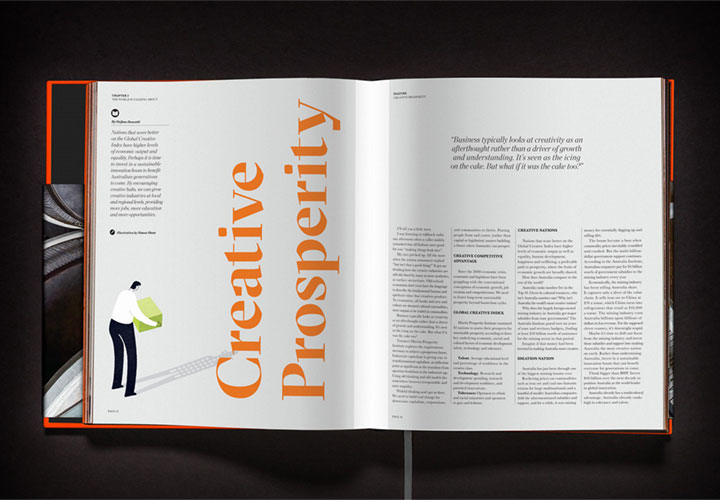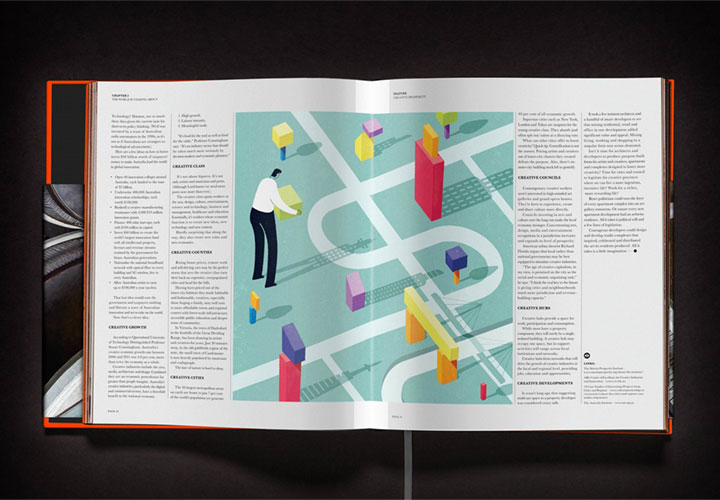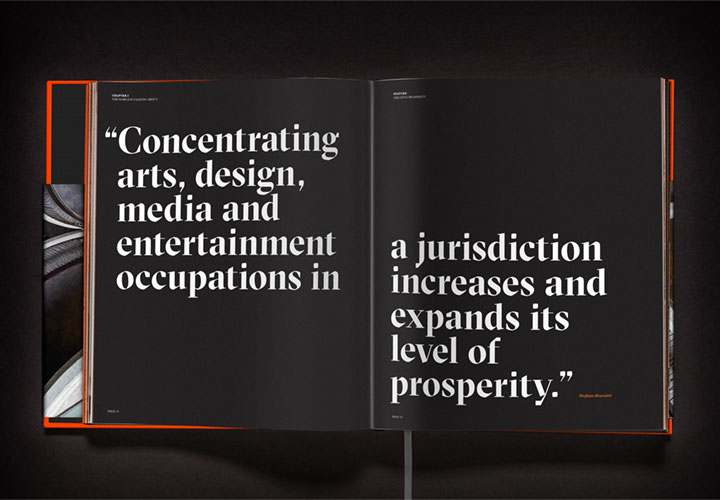Our latest addition to BrandCulture’s library explores some of our current fascinations: big data, place branding and the ingredients that shape the world’s best cities.
The Place Economy, Volume 2, is a book that brings together visionary urban planners, development experts, architects and designers to dissect what makes places great. What are the ingredients of places that breed better lives and better futures?
Designer and author Andrew Hoyne says the latest volume drills down from ‘macro to micro’. The goal is to understand how people interact and engage with spaces at street level, which is the true measure of a building’s success.
His conversation with Ethan Kent, Senior Vice President of the Project for Public Spaces, is illuminating. Kent has worked in Australia, and said: “One of my messages in Australia has been that you’re doing liveability really well but you have a lot of opportunity to do more about lovability.”
Loveability, according to Kent, means drawing out what people already love about the places they live – and preserving those things. It’s about getting people and citizens involved in deciding the identity, purpose and meaning of places in order to create inclusive, welcoming places.
A place-led approach to experiential graphic design
This idea is idea echoed by Lucy Turnbull, Chief Commissioner of the Greater Sydney Commission. In The Place Economy, she explains the organisation’s place-led approach to planning: “Place-based approaches put people at the heart of planning. It’s about really honing in on how specific places work for people.”
She says cities are complex mosaics, which makes a cookie-cutter approach impossible. Collaboration is key. Place-based planning is an inherently collaborative process where stakeholders all work towards a shared vision.
It’s a sentiment that resonates with us, too. Our designs are always created in collaboration with an array of experts: councils, communities, brand managers, engineers, architects, builders, and so on. Workshops and user experience surveys are essential to our design process.
Understanding the power of big data to the creation of place
The chapter on big data is also fascinating. Data is now being used to understand how and when crowds form, how people move in real time, and ways to improve our cities. Machine learning will also help us to understand the paths people travel, where they stop to take photos, the events they attend. This data will help us anticipate people’s future needs and wants.
Michelle Cramer, Head of Creative Solutions, Applied Insight at Lendlease says designers of the future will be “part creative, part scientist”. They’ll know how to ask the right questions of data: “Questions relevant to the day to day lives of people and what they seek in their parks, places, precincts and CBDs.”
We’re excited about a future where designers are “part creative, part scientist” because we’re already using real-time data in our strategic wayfinding work. We use it to understand how people make decisions, and where they get lost, or which areas are underutilized. By interrogating live wayfinding data, we can create more memorable and engaging user experiences.
When place branding fails
Chapter 3 is devoted to place branding. Hoyne believes place branding has never been more critical to a city’s success. There are over 3,000 cities globally – all competing for residents, tourists and investment.
“When place branding fails it is often because a city has dumbed down the exercise to a logo and tagline instead of thinking of it as a strategic blueprint, a plan for overarching growth and development – something that cannot be achieved by an icon on marketing material,” he writes.
The best place brands start by consulting the community about what makes their city different from others. For Austin, Texas it began with positioning itself as the ‘Live Music Capital of the World’. This was followed by the ‘Keep Austin Weird’ campaign, celebrating the city’s more quirky qualities, which are beloved by locals. Today, Austin is one of the fastest growing cities in the US.
According to Hoyne, there are three things a place brand needs to succeed: A clear purpose and a unique vision. A connection to an inherent truth, ideally one with a point of difference. And a strategy that clearly defines how branding will evolve and extend to marketing more tactical seasons, themes, events.
Overall, The Place Economy is a beautiful addition to our library. It’s filled with photos of interesting, colourful, eclectic cities like Dundee in Scotland, Sofia in Bulgaria and Bologna in Italy – destinations we’ve now added to our travel bucket list.
* ‘The Place Economy’, Volume 2, is published by Hoyne (2019).




